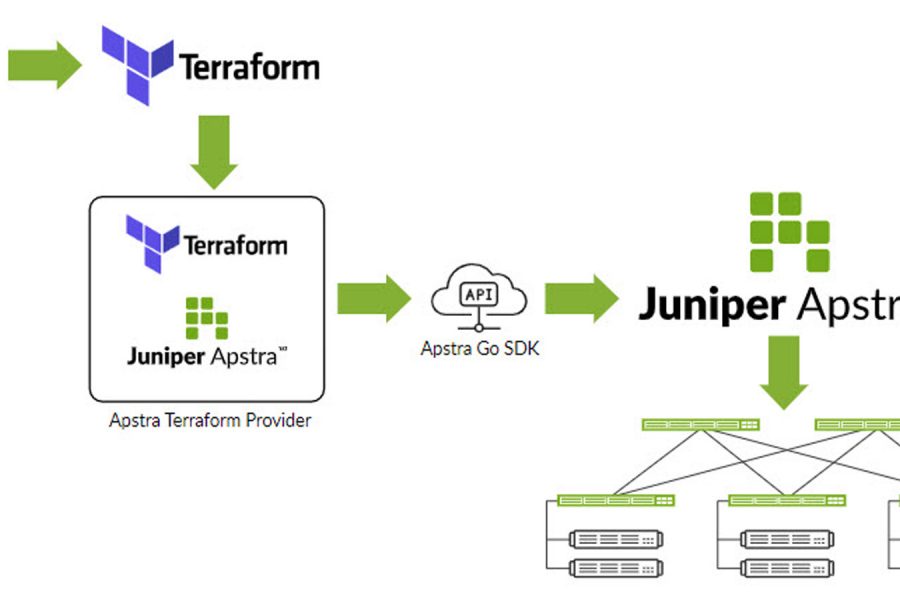New Apstra product enhancements make it easier than ever to experience the benefits of a Juniper experience-first data center
It’s been a little over a year since Juniper Networks took the bold step of acquiring Apstra, the creator of the only vendor-agnostic intent-based networking software for data center operations. In that time, much has happened both externally and internally at Juniper, all of which has enabled the company’s data center business to continue its growth. Many factors contributed to this tremendous success, including continued investment in the Juniper Apstra product, development of Apstra partners and significant Apstra customer momentum across both the enterprise and service provider segments.
Today, we’re excited to announce the latest series of Apstra product enhancements that will enable Juniper to continue its strong data center momentum into 2022 and beyond. Not only have we expanded all the benefits of our intent-based networking solution to more data center environments, but it’s even easier to deploy and operate with more robust security capabilities.
To the Edge and Beyond
No one could have predicted the surge in workload distribution that a pandemic would generate – including data volume and demand for faster, more reliable service. To support increasing business digitization and reduce latency, many organizations have turned to edge computing to bring data processing closer to the end user.
Now, in addition to using Apstra in centralized or hyperscale data centers, customers can use our powerful software in edge locations – or at any remote site that doesn’t require the full scale of a multistage switching network. With Apstra, networking teams can centrally design, deploy and operate a network consisting of an EVPN-VXLAN overlay with an IP fabric underlay in a configuration made up of only two leaf switches. Additionally, teams can scale and add access switches to the fabric whenever needed. Apstra will automatically register the new devices and apply the pre-validated configurations.
Zero Trust for a More Secure Data Center
Apstra’s single source of truth is a key foundation for Zero Trust security, enabling network operators and security experts to view the exact state of the network, its configuration and the intended outcome. Apstra’s enhanced policy assurance introduces new segmentation capabilities. By allowing organizations to apply all their security policies from a single point and to specify enforcement at the most granular level, Apstra ensures that the network is continuously compliant, consistent and reliable.
Apstra also provides:
- Role-Based Access Control (RBAC) to limit who can see which data
- Continuous validation against intent to identify configuration drift in real time
- Policy assurance to confirm that security policies are being enforced as intended
- Live audits to track the origin of changes
Improvements in RBAC, audit and security policy granularity have all been made to meet the requirements of customers using Apstra in multi-tenant environments.
Hassle-Free Deployments and Migrations
With IT requirements evolving at an unprecedented rate, constant data center deployments and migrations are inevitable. In addition, the number of data centers in use frequently changes, either increasing due to natural IT growth or acquisitions, or decreasing when older data centers are decommissioned or businesses divest themselves of certain IT requirements or applications. These deployments and migrations can be challenging, expensive and resource intensive. But they don’t have to be.
Juniper’s new Apstra Deployment and Migration services leverage Apstra’s intent-based networking architecture and in-house tools to help organizations significantly reduce the time, cost and risk associated with deployments. Our experts perform real-time preconditioned validations based on the exact blueprint, network models and operating systems. This enables customers to migrate to the latest architectures and automate everyday operations with minimal downtime and an unprecedented level of assurance, while also reducing the CapEx and OpEx associated with physical and virtual testing during deployment. Customers can also take advantage of best-practice design methodologies and in-house automation tools to accelerate deployments for increased business agility.
New Data Center Learning
Both experienced and new data center networkers will have the ability to advance their careers with Juniper’s revised curriculum that includes new and updated training and certifications.
- Introduction to Juniper Data Center Networking: This foundational course provides introductory instruction on data center switching using Juniper products and covers the baseline knowledge necessary to understand a data center that’s built upon an IP fabric with an EVPN/VXLAN overlay. This is the recommended preparation for the new Juniper Networks Certified Associate, Data Center (JNCIA-DC) certification, which launches in May 2022.
- Data Center Automation using Juniper Apstra: This expanded course provides the necessary knowledge required to manage data center networks with Apstra and now covers how to add a spine, leaf and generic system to a running blueprint (IP fabric), VMware integration and data center interconnect. It’s recommended as preparation for the new Juniper Networks Certified Specialist, Data Center (JNCIS-DC) certification, also launching in May 2022.
- Data Center Fabric with EVPN and VXLAN: This recently updated course now includes coverage of enhanced loop protection, MAC-VRF, ERB, collapsed fabric configuration, super spine configuration, EVPN multicast-assisted replication, filter-based forwarding in the data center and seamless EVPN-VXL. This course is recommended training for the updated Juniper Networks Certified Professional, Data Center (JNCIP-DC)
A Year of Integration, Innovation and Achievements
Now that we’ve described the latest enhancements, let’s look back at how far Juniper has come with Apstra since the acquisition last year.
- Juniper expanded Apstra’s multivendor support. Apstra is the only intent-based networking software that eliminates vendor lock-in, and Juniper proved that it was committed to keeping this unique feature. For example, in last year’s Apstra 4.0 release, we provided validated qualification for Cisco Systems, Arista Networks, Dell Technologies and added VMware NSX-T 3.0 and Enterprise SONiC integrations. Although we believe that customers benefit most by combining Apstra with our own QFX Series switches and other proprietary hardware and software, our primary goal is to give customers the tools they need to reduce operational complexity and assure reliability – regardless of which vendor environment they have.
- Apstra was integrated with more Juniper products. It takes time to fully integrate a newly acquired company, but Juniper hit the ground running this past year! We’ve added Apstra support for more Juniper switches and routers, as well as for all current versions of our Junos® operating system, including Junos Evolved in spine, super-spine and non-EVPN-VXLAN leafs.
- Apstra adoption grew by leaps and bounds. Since the acquisition, Apstra logos have increased over 400 percent. Additionally, pre-acquisition customers renewed their Apstra licenses. For example, one Fortune 5 customer not only renewed, but also deployed Apstra to a second data center and introduced Apstra to a major managed services provider.
What a year 2021 was for Juniper and Apstra, in particular. We are just getting started! As customers focus on reliability as the key metric in their data centers, Juniper sets the bar with our unique intent-based networking capabilities coupled with automated assurance, zero-trust security and multi-vendor capabilities. Apstra epitomizes Juniper’s experience-first vision of putting user and operator experiences at the forefront of everything we do. We’re excited for what lies ahead and welcome you to join us on the journey!
Learn More


